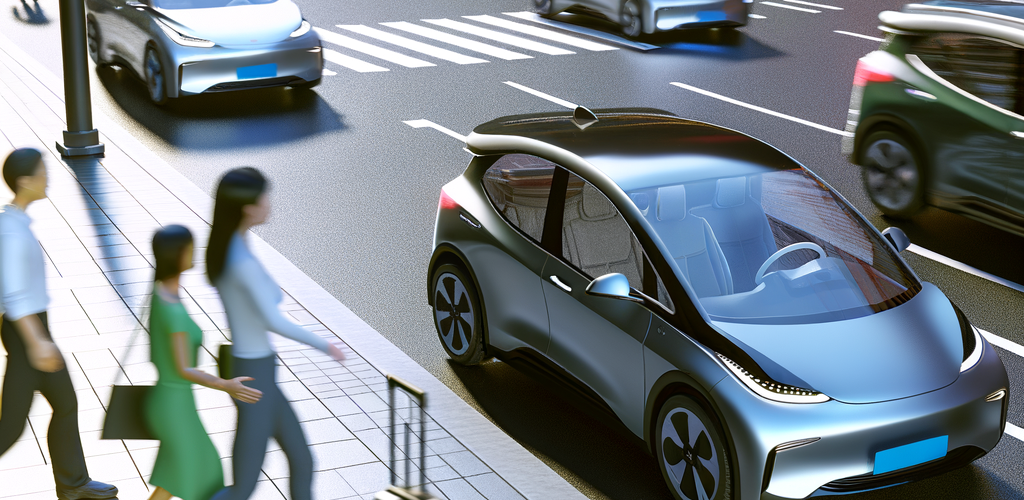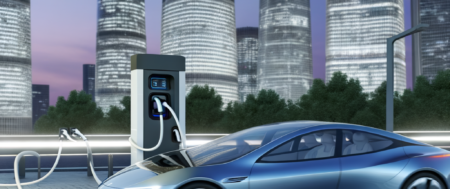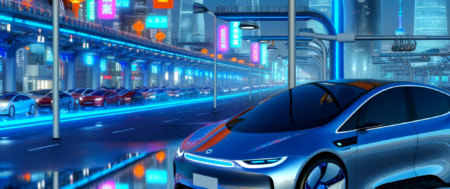China, the world’s largest automotive market, is rapidly transitioning towards Electric Vehicles (EVs) and New Energy Vehicles (NEVs) due to urbanization, a growing economy, and heightened environmental concerns. Supported by generous government incentives, this shift underscores China’s aim to spearhead the global move towards sustainable transport. Strategic partnerships, including joint ventures between foreign automakers and domestic car brands, are key in overcoming the regulatory landscape and aligning with consumer preferences for eco-friendly options. These alliances, coupled with technological advancements, are empowering participants to excel in a market defined by stiff competition and swift changes. This focus on EVs and NEVs demonstrates China’s commitment to lowering carbon emissions and highlights the importance of strategic partnerships and innovation in meeting the demands of the largest automotive market amidst its green transformation.
In the fast-evolving world of the automotive industry, China has firmly positioned itself at the forefront, emerging as the largest automotive market globally. This pivotal shift is fueled by a combination of the country’s rapidly growing economy, a burgeoning middle class, and accelerating urbanization trends. As the epicenter for both production and sales, China’s automotive market presents a unique blend of opportunities and challenges for domestic and foreign car brands alike. The surge in demand for Electric Vehicles (EVs) and New Energy Vehicles (NEVs), driven by robust government incentives and mounting environmental concerns, underscores the country’s commitment to pioneering in the green automotive revolution.
The landscape of the Chinese automotive market is characterized by its dynamic nature, marked by a high degree of market competition, evolving consumer preferences, and rapid technological advancements. Foreign automakers looking to tap into this lucrative market often find themselves navigating a complex regulatory landscape, requiring strategic partnerships and joint ventures with local Chinese companies as a key to success. This collaborative approach not only helps in complying with local regulations but also in accessing China’s vast consumer base, which exhibits a strong appetite for both innovative EVs and traditional vehicles.
Understanding the intricacies of China’s automotive sector, from its government policies to consumer behaviors and market trends, is essential for stakeholders aiming to make a mark in this vibrant market. This article delves into the dynamics of navigating the largest automotive market, highlighting the critical role of electric vehicles, strategic partnerships, and the continuous interplay between domestic priorities and global economic trends. Join us as we explore the roadmap to success in China’s competitive automotive landscape, where the future of mobility is being written today.
1. “Navigating the Largest Automotive Market: China’s Surge in Electric Vehicles and Strategic Partnerships”

Navigating the vast and ever-expanding terrain of the Largest Automotive Market, China, requires a nuanced understanding of its dynamic forces—from burgeoning urbanization and a growing economy to the shifting sands of consumer preferences and technological advancements. At the forefront of this automotive revolution are Electric Vehicles (EVs) and New Energy Vehicles (NEVs), which are gaining unprecedented traction, powered by both environmental concerns and hefty government incentives.
The surge in EVs and NEVs is not just a testament to China’s commitment to combating pollution but also highlights its ambition to lead in the global automotive industry. This green transition is shaped significantly by strategic partnerships, particularly between foreign automakers and domestic car brands. These collaborations are essential in navigating the complex regulatory landscape of China, which is as challenging as it is rewarding. Joint ventures have become a crucial strategy for foreign entities aiming to penetrate the vast Chinese market, allowing them to tap into the local expertise of domestic firms and better cater to consumer preferences.
Consumer preferences in China are rapidly evolving, with a marked shift towards environmentally friendly vehicles that promise a sustainable future. This shift is further accelerated by government policies aiming to reduce carbon emissions, making EVs and NEVs not just a choice but a movement. Technological advancements play a pivotal role in this shift, with both domestic and international players constantly innovating to deliver more efficient, reliable, and affordable green vehicles to the Chinese market.
The competitive landscape of the China automotive market is intense, with market competition fostering innovation and driving down costs. Domestic brands, once seen as trailing behind their foreign counterparts in terms of quality and technology, are now at the forefront of the EV and NEV wave, challenging international brands and sometimes outpacing them in innovation and sales within the Chinese market.
Strategic partnerships between domestic and foreign firms are more critical than ever in this context. They serve not only to bridge gaps in technology and market knowledge but also to align with government policies that favor joint ventures and collaborative efforts in the automotive sector. These partnerships are a testament to the symbiotic relationship between foreign automakers looking to access China’s vast consumer base and domestic companies aiming to leverage international expertise and technological prowess.
In conclusion, the surge in EVs and NEVs within the Largest Automotive Market underscores China’s role as a pivotal player in the global shift towards sustainable transportation. Navigating this market requires a delicate balance of understanding and adapting to regulatory requirements, consumer demands, and technological trends. Strategic partnerships emerge as a linchpin in this complex ecosystem, enabling foreign and domestic players alike to thrive in a market characterized by fierce competition and unparalleled opportunities.
In conclusion, China’s position as the largest automotive market in the world is a testament to its rapidly growing economy, increasing urbanization, and the expanding purchasing power of its burgeoning middle class. The country has become a pivotal battleground for both domestic car brands and foreign automakers, all vying for a piece of this lucrative pie. The shift towards Electric Vehicles (EVs) and New Energy Vehicles (NEVs), driven by environmental concerns and robust government incentives, highlights the market’s dynamic nature and its alignment with global sustainability trends.
Navigating this complex regulatory landscape requires strategic partnerships, often in the form of joint ventures, which enable foreign companies to tap into the vast consumer base while adhering to local regulations. The competition is fierce, with market players needing to stay abreast of technological advancements, consumer preferences, and the ever-evolving governmental policies.
The future of the automotive industry in China looks promising yet challenging. Companies that can leverage the right blend of innovation, strategic partnerships, and understanding of the local market will likely emerge victorious. As China continues to lead the charge in the adoption of EVs and NEVs, its automotive market will undoubtedly remain a key indicator of global industry trends, market competition, and the potential for new energy vehicles on the world stage. Understanding and adapting to this market’s unique characteristics will be crucial for any player aiming to succeed in the largest automotive landscape globally.







